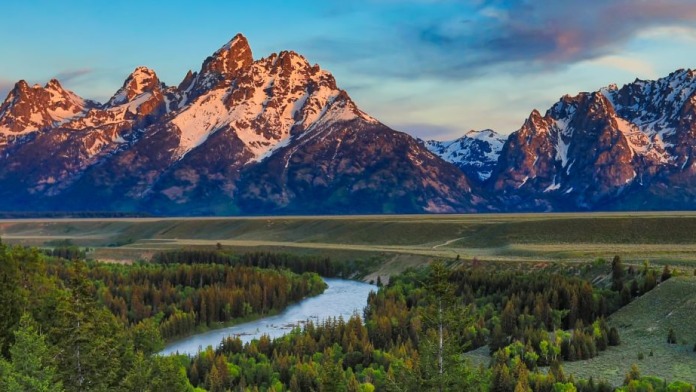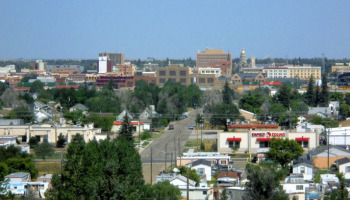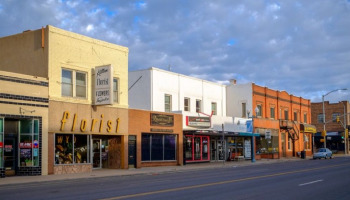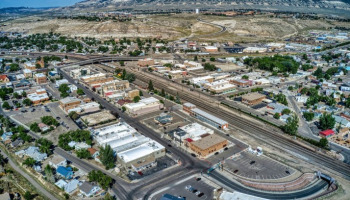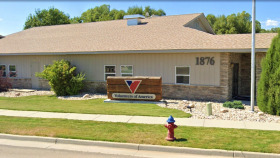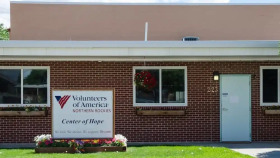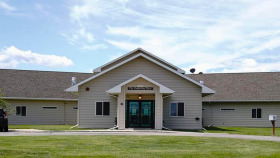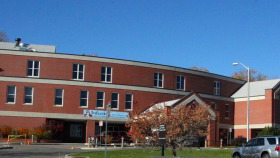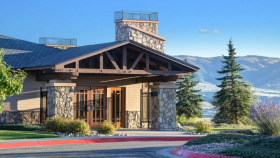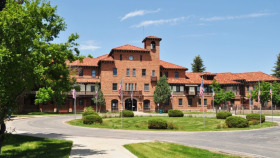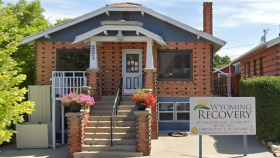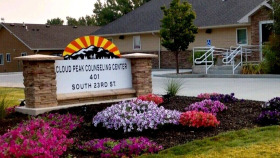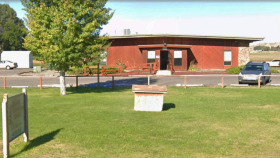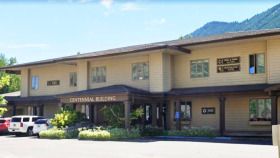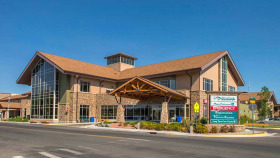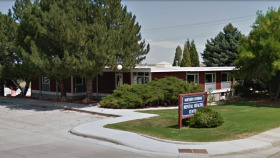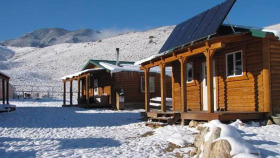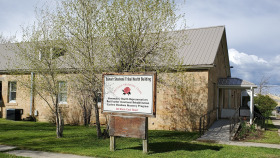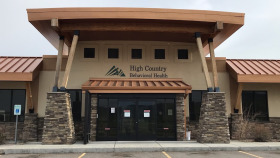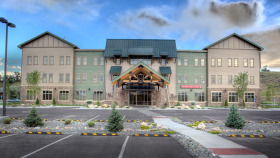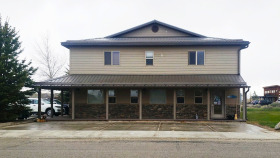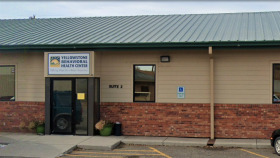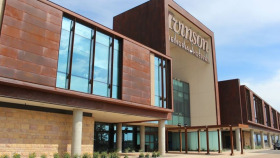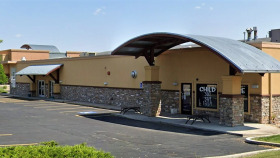Expert Insights
People often don’t understand that addiction runs rampant in state prison systems. Back in 2010, I received the biggest culture shock of my life – I was sentenced to four years in prison for a drunk driving conviction. Something I was consistently shocked by was the availability of alcohol and drugs inside prison – and it was almost always a group of male prison guards sneaking in the contraband. Every time the women had an opportunity to get high, there was no hesitation. When the buzz wore off, the physical withdrawals and mental anguish always came back with a vengeance. This is not conducive to an environment of rehabilitation.
~ Natalie Baker
How Much Does Drug Rehab Cost in Wyoming?
Wyoming is ranked 50th nationwide in terms of addiction treatment affordability, with an average cost of drug and alcohol rehab of $65,975 (without insurance).
- Medical detox is the most expensive, with an average cost of $162,652
- Long-term inpatient drug rehab in Wyoming costs an average of $58,219
- Outpatient addiction treatment in Wyoming costs an average of $9,674
- Outpatient methadone treatment is the most affordable, with an average cost of $8,595
The exact cost of treatment at Wyoming drug rehabs and alcohol rehabs varies from facility to facility. Most of the state’s addiction rehab centers accept some form of health insurance, and many offer reduced-cost or free treatment services based on patients’ income and other situational factors.
Paying for Addiction Treatment in Wyoming
Private Pay and Insurance
According to the Affordable Care Act, signed into law in 2010, substance use disorders must be a covered benefit at the same parity of medical and surgical coverage for most insurance providers.
There are many major commercial health insurance carriers in the state of Wyoming. Additionally, in 2024, two insurers offered exchange plans on the Marketplace. Commercial providers include:
United Healthcare of Wyoming
United healthcare of Wyoming offers commercial insurance, policies through the Insurance Marketplace and has Medicaid and Medicare plans. UHC offers individuals interested in substance use disorder treatment a 24-hour substance use hotline.
Here, members can speak with specialized recovery specialists that will provide confidential guidance on treatment options, assistance in finding participating providers and facilities, and answer any questions they may have regarding the process.
For those with United Health Care, coverage differs from plan to plan. The company suggests you check your benefits summary to determine out-of-pocket expenses and what services are covered for Alcohol and Substance Abuse.
Blue Cross Blue Shield of Wyoming
BCBS of Wyoming covers alcohol and substance abuse treatment. Treatment options include inpatient and outpatient treatment, detox services, individual and group counseling, intensive outpatient programs, transitional care planning and medication assisted treatment.
Some treatment options require prior authorization and are covered services based on severity of medical need. Individuals should check with their insurance provider to determine if prior authorization is required and to determine out-of-pocket costs under their benefit plan. The prior authorization process can take up to 14 days to be completed.
Mountain Health Co-Op
Alcohol and substance use disorder treatment are covered services by Mountain Health Co-Op, under the individual and employer plans. Medicare coverage should be confirmed before seeking services. The amount of coverage and maximum out-of-pocket expenses vary from plan to plan. Individuals should check their summary of benefits, also in-network providers and facilities are recommended to get the best coverage.
Cigna
Drug and alcohol addiction recovery programs are a covered benefit with Cigna. These services may include inpatient and outpatient treatment options, counseling and case management. The covered services are based on the individual’s benefit plan and may need prior authorization. Individuals should check their benefits plan or call the insurance company to determine coverage and what the out-of-pocket cost will be.
Medicare
Wyoming provides health insurance coverage for residents who meet certain criteria such as income level, state residency, be a U.S. citizen or national, some adults with children under the age of 19, pregnant women, some individuals with disabilities, women under the age of 65 and in need of breast or cervical cancer treatment. These Medicaid plans cover inpatient and outpatient substance use disorder treatment services at facilities that accept this type of insurance. Prior authorization is often required for services. Participants should contact their insurance provider to determine what are covered benefits, what out-of-pocket costs they may incur and to help them locate providers that participate in the Equity Care program.
Medicaid
Medicare provides insurance coverage for individuals over the age of 65 and in some cases individuals with disabilities and certain disorders. Medicare Part A pays for inpatient substance abuse treatment. Clients are required to pay the same co-pays they would be charged for any other type of inpatient hospitalization. For those with Medicare Part B, outpatient substance abuse treatment services from a clinic or hospital outpatient department are covered. Medicare Advantage plans can help pay for services such as prescription drug coverage that is not covered as a part of Part A or Part B. Services must be received at a Medicare participating facility or practice.
Military
TRICARE and VA benefits are accepted at participating providers throughout the state of Wyoming. For those with substance use disorders, the Veterans Administration offers inpatient and outpatient services at their clinics and hospitals at no cost.
Tribal Funding/Programs
All individuals of Native American or Alaska Native descent are eligible for health care and Medicaid through the Indian Health Service (IHS). Addiction recovery programs are covered services.
Wyoming is home to the Wind River Reservation. It is the 7th largest Native American reservation in the United States and located in the west-central part of the state.
Other Low Cost Options
For those individuals without commercial insurance, government sponsored insurance, or insurance through military service, some providers will accept sliding scale payment options, no fee for service, or financial aid. Clients will need to speak with service providers to find out what options are available to them.
Some facilities with these payment options include but are not limited to: Oxbow Center, High Country Behavioral Health and Southwest Counseling Service.
Oxbow Center
Oxbow Center has five locations throughout the state of Wyoming offering alcohol and substance use disorder treatment as well as mental health services. They offer outpatient individual counseling and intensive outpatient treatment options.
No individual will be turned away due to inability to pay. They offer sliding scale payment options ranging from $1.00- $125 per hour for counseling services. Proof of income is required to qualify for this program.
High Country Behavioral Health
High Country Behavioral Health located throughout Wyoming offers a wide range of mental health services including alcohol and substance use disorder treatment.
Some services include outpatient individual, group and family counseling. Case management and community based rehabilitation services and also have two locations ( Rawlins and Douglas) that offer inpatient treatment options.
No one will be turned away for an inability to pay. They accept a wide range of commercial insurance, Medicaid and Medicare and also have a sliding scale fee for service option. Verification of income and family size is required for this option.
Southwest Counseling Service
Southwest Counseling Service is located in Rock Springs, Wyoming. They offer inpatient and outpatient alcohol and substance use disorder and dual diagnosis treatment for adolescents and adults.
Southwest was the first in Wyoming to offer inpatient treatment for pregnant women and mothers. Their program allows for mothers to keep their children with them during treatment, fostering parenting and life skills. They accept a wide range of commercial insurance and also a sliding scale fee payment option. In order to participate in the sliding scale fee service, verification of income and family size is required.
Free and Low-Cost Addiction Treatment in Wyoming
Several of Wyoming’s alcohol and drug rehab facilities accept various forms of payment. Of the state’s 60 addiction treatment centers:4
There are 45 low cost or free addiction treatment centers in Wyoming. Their services include inpatient and outpatient treatment options, including intensive outpatient treatment, relapse prevention, and aftercare programs.
Some of these treatment options also include medication assisted treatment where clients receive medications such as naltrexone, methadone and buprenorphine to ease withdrawal symptoms and decrease cravings.
Because many individuals experiencing alcohol and substance use disorder also have co-occurring mental illnesses such as bi-polar disorder, depression, anxiety, and PTSD, many addiction treatment centers in Wyoming offer mental health services as well.
Case management services also engage those facing homelessness, food insecurity, and unemployment by connecting clients with resources in their communities. Often, clients work with healthcare and insurance specialists to enroll in state funded health care plans such as Medicare or Medicaid.
Recover Wyoming
This a non-profit located in Cheyenne, Wyoming that provides support and services for those wanting long-term recovery from substance use disorders. They work with individual’s to rebuild their lives in recovery by assisting them locating resources to assist with housing and employment and becoming productive community members.
Recovery Wyoming is an RCO, Recovery Community Organization. There are over 175 of these organizations throughout the United States that are independent non-profit organizations that seek to bridge the gap between treatment and long term recovery.
Substance Abuse and Mental Health Ombudsman Program
This is a free service for those with substance use disorder and/or mental health illness to access available services and resources, advocate for proper treatment and answer questions regarding substance use and treatment options and patient’s rights.
Wyoming 211
This is a service for all Wyomingites. They offer services via phone, texting and an online database connecting people to health, community and disaster resources. These include connecting people with help finding alcohol and substance abuse disorder treatment, assistance for those who are unstably housed or in need of food and meals.
YES House
Also known as Youth Emergency Services, this is a non-profit organization in Gillette, Wyoming providing services for youth 5-24 years of age and their families. They provide a wide range of services for those impacted by substance use disorder including in-house substance use treatment, counseling, group home placement and emergency and transitional housing.
NAMI Wyoming
The National Alliance on Mental Illness is a nationwide organization that is working towards raising awareness, providing advocacy and assisting individuals and families in finding resources they need to build better lives. They offer services through their website, phone and texting. Residents of Wyoming can contact the organization and be connected to local resources for help such as locating alcohol and substance use disorder treatment programs.
Wyoming Drug Use Statistics
Although Wyoming is the least populous state in the United States, it has long struggled with drug and alcohol use issues within its communities. Notable substance use statistics include:1, 2, 3

In 2019, nearly 5,300 people were admitted to publicly-funded Wyoming drug and alcohol rehabs.

From 2019-2020, 46,000 residents reported using illicit substances at least once per month.
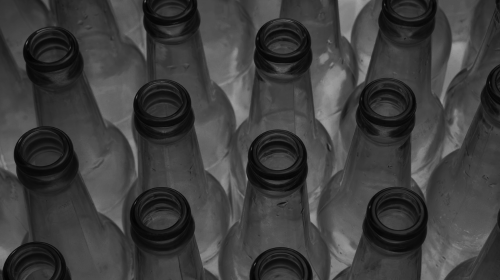
Roughly 121,000 residents reported engaging in binge drinking at least once per month.
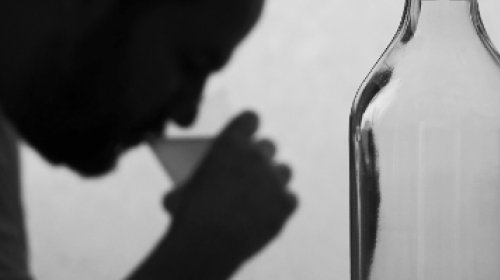
About 258,000 residents reported past-month alcohol consumption.
There are 45 low cost or free addiction treatment centers in Wyoming. Their services include inpatient and outpatient treatment options, including intensive outpatient treatment, relapse prevention, and aftercare programs.
Some of these treatment options also include medication assisted treatment where clients receive medications such as naltrexone, methadone and buprenorphine to ease withdrawal symptoms and decrease cravings.
Because many individuals experiencing alcohol and substance use disorder also have co-occurring mental illnesses such as bi-polar disorder, depression, anxiety, and PTSD, many addiction treatment centers in Wyoming offer mental health services as well.
Case management services also engage those facing homelessness, food insecurity, and unemployment by connecting clients with resources in their communities. Often, clients work with healthcare and insurance specialists to enroll in state funded health care plans such as Medicare or Medicaid.
Recover Wyoming
This a non-profit located in Cheyenne, Wyoming that provides support and services for those wanting long-term recovery from substance use disorders. They work with individual’s to rebuild their lives in recovery by assisting them locating resources to assist with housing and employment and becoming productive community members.
Recovery Wyoming is an RCO, Recovery Community Organization. There are over 175 of these organizations throughout the United States that are independent non-profit organizations that seek to bridge the gap between treatment and long term recovery.
Substance Abuse and Mental Health Ombudsman Program
This is a free service for those with substance use disorder and/or mental health illness to access available services and resources, advocate for proper treatment and answer questions regarding substance use and treatment options and patient’s rights.
Wyoming 211
This is a service for all Wyomingites. They offer services via phone, texting and an online database connecting people to health, community and disaster resources. These include connecting people with help finding alcohol and substance abuse disorder treatment, assistance for those who are unstably housed or in need of food and meals.
YES House
Also known as Youth Emergency Services, this is a non-profit organization in Gillette, Wyoming providing services for youth 5-24 years of age and their families. They provide a wide range of services for those impacted by substance use disorder including in-house substance use treatment, counseling, group home placement and emergency and transitional housing.
NAMI Wyoming
The National Alliance on Mental Illness is a nationwide organization that is working towards raising awareness, providing advocacy and assisting individuals and families in finding resources they need to build better lives. They offer services through their website, phone and texting. Residents of Wyoming can contact the organization and be connected to local resources for help such as locating alcohol and substance use disorder treatment programs.
Drug Laws in Wyoming
Marijuana Laws in Wyoming
Marijuana is illegal in the state of Wyoming. This includes possession, cultivation, distribution, sell and use. There is no medical marijuana program in Wyoming. Being found under the influence of marijuana is considered a misdemeanor with a possibility of six months in jail and a fine of up to $750.00
Adult DUI Laws in Wyoming
Driving while under the influence of alcohol in Wyoming is considered operating a motor vehicle with a blood alcohol content (BAC) of 0.08% or higher. The first offense could result in a maximum of up to six months in jail with a possibility of up to $750 fine or both. Driving privileges are revoked for 90 days.
Underage DUI Laws in Wyoming
Under this law, anyone under the age of 21 with a blood alcohol content (BAC) of 0.02% or higher is considered to be driving under the influence. The first offense could result in a fine up to $750 and a suspension of driving privileges for 90 days. If the second offense happens within one year of the first offense, it would result in one month in jail, a fine of up to $750 or both, with a suspension of driving privileges for six months.
Possession of a Controlled Substance in Wyoming
In Wyoming , the charges and punishment for those in possession of controlled substances largely depends on the drug and the amount the individual has in their possession. Controlled substances are divided into classifications, known as schedules, based on the potential harm the drug can cause.
If you possess no more than the threshold amounts that the state lists for a Schedule I, II, III, or IV drug, it’s considered a misdemeanor. This could result in one year in jail and a fine of $1,000. If you possess more than the statutory threshold amounts, it’s considered a felony and could result in a longer prison sentence and higher fine.
Resources
- Substance Abuse and Mental Health Services Administration. (2021, June). Treatment Episode Data Set (TEDS) 2019 (Revised), Admissions to and Discharges From Publicly Funded Substance use Treatment.
- Substance Abuse and Mental Health Services Administration. (2021, December 13). National Survey on Drug Use and Health 2019-2020.
- Wyoming Department of Health. (n.d.). Drug Overdose Dashboard.
- Substance Abuse and Mental Health Services Administration. (2020). National Survey of Substance Abuse Treatment Services (N-SSATS): 2020, Data on Substance Abuse Treatment Facilities.
- Substance Abuse and Mental Health Services Administration. (2016, December 16). Directory of Single State Agencies for Substance Abuse Services.
- Frank, R. G., Beronio, K., & Glied, S. A. (2014). Behavioral Health Parity and the Affordable Care Act. Journal of Social Work in Disability & Rehabilitation, 13(1-2), 31-43.
- Medicaid.gov. (n.d.). Behavioral Health Services.
- Department of Health and Human Services, Centers for Medicare & Medicaid Services. (2016). Medicare Coverage of Substance Abuse Services.
- Substance Abuse and Mental Health Services Administration. (2022). Treatment Locator Map.
- National Institute on Drug Abuse. (2018). Principles of Drug Addiction Treatment: A Research-Based Guide (Third Edition) Types of Treatment Programs.
- National Institute on Drug Abuse. (2018). How long does drug addiction treatment usually last?
- Centers for Medicare & Medicaid Services. (2009, February). Impacts Associated with the Medicare Psychiatric PPS: A Study of Partial Hospitalization Programs.
- Substance Abuse and Mental Health Services Administration. (2021). Clinical Issues in Intensive Outpatient Treatment for Substance Use Disorders.
- Patton, D. & McDowell, T. Substance Abuse Aftercare Treatment. Arizona State University, Center for Applied Behavioral Health Policy.
- National Institute on Drug Abuse. (2020, July 13). Drug Abuse and Addiction.
- United States Government Accountability Office. (2021, March). Drug Abuse, Most States Have Good Samaritan Laws and Research Indicates They May Have Positive Effects.
- Wyoming Legislature. (n.d.). Title 35 – Public Health and Safety.
- Wyoming Department of Health. (n.d.). Opioid Overdose Response.
- Wyoming Legislature. (n.d.). Title 25 – Institutions of the State.
- Wyoming Department of Health. (n.d.). Court Supervised Treatment (CST) Program.
- Substance Abuse and Mental Health Services Administration. (2021). Facility Locator. from
https://findtreatment.samhsa.gov/locator - Substance use disorder (drug abuse). (n.d.). UnitedHealthcare. https://www.uhc.com/health-and-wellness/health-topics/substance-use-disorder
- Google. (n.d.). https://www.bcbswy.com/members/member-mental-health-and-substance-abuse-resources
- Home Page – Wyoming Department of Health. (2024, April 2). Wyoming Department of Health. https://health.wyo.gov/
- Home | TRICARE. (n.d.). TRICARE. https://www.tricare.mil/
- Welcome to Medicare. (n.d.). Medicare. https://www.medicare.gov/
- Bureau of Indian Affairs | Indian Affairs. (n.d.). Bureau of Indian Affairs. https://www.bia.gov/bia
- Services — Oxbow Center. (n.d.). Oxbow Center. https://www.oxbowcenterwy.org/services
- Mental Health Treatment, Counseling & Therapy. (2024, May 21). High Country Behavioral Health. https://www.hcbh.org/
- Services | Southwest Counseling Service. (2023, July 26). Southwest Counseling. https://swcounseling.org/services/
- Site Not Available. (n.d.). https://recoverwyoming.org/
- Services — Wyoming Guardianship Corporation. (n.d.). Wyoming Guardianship Corporation. https://www.wyoguardianship.org/services-life
- YESHouseGillette. (2024). About Us | Youth Emergency Services. Youth Emergency Services. https://yeshouse.org/about-us/
- About NAMI. (n.d.). NAMI. https://www.nami.org/about-nami/
- Driving Under the Influence law in Wyoming: An Overview. (2020). https://wyoleg.gov/InterimCommittee/2020/01-2020051913-01TopicSummary-Judiciary-DUIStatutes.pdf
- HOUSE BILL NO. HB0030 Controlled Substances Act-possession amendments. (2024). In STATE OF WYOMING. https://www.wyoleg.gov/2024/Introduced/HB0030.pdf

